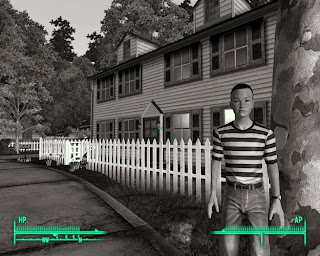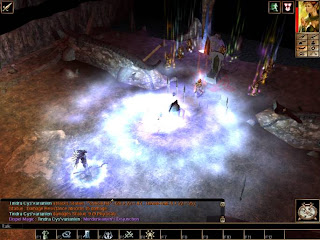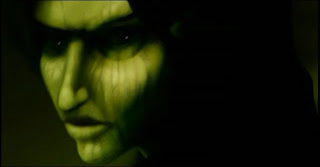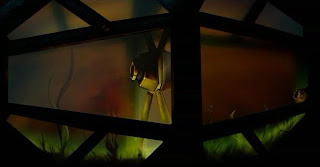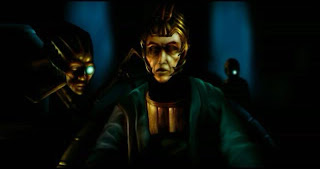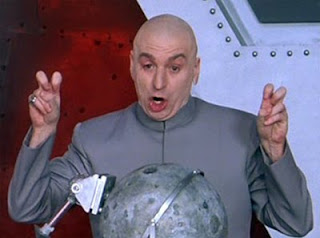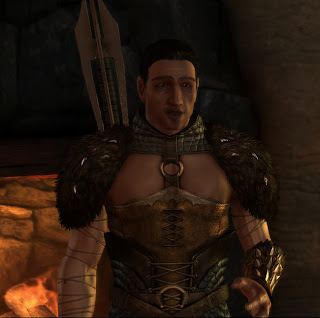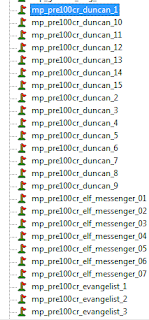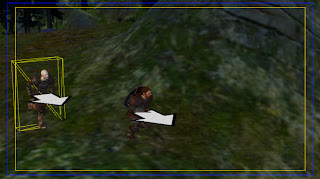Fallout 3 starts out with you in Vault 101, with Liam Neeson as your dad. You grow up through a few events in the game, starting from your birth, where your mother dies. Then just as you're old enough to be a real person, dad breaks out of the vault and turns everything upside down. The whole place goes crazy and the leader (bearing the title of "overseer") of the vault seems to blame you for the trouble. So you escape into the wilderness of a nuclear wasteland Washington DC to find your father.
The main plot, as thin on the ground as it is, first involves you trying to track down your father. So you head to a radio station because the broadcaster apparently knows your father, who tells you to head to Rivet City (a town in an aircraft carrier) to speak to a scientist there. That scientist then directs you to find a vault in the wilderness where your father was headed. He's attempting to restart "Project Purity" in the Jefferson Memorial building which will remove the radiation from the water in the tidal basin. You end up rescuing him from a virtual reality program in an abandoned vault.
It's "The Matrix" meets "Pleasantville"
Re-united with your father, you return to the Memorial, where soldiers from "The Enclave" have taken over. They are apparently the game's true villains and as a result of this encounter, several Enclave soldiers and your father are killed by radiation in the main chamber of the device. The player must then escape from the Enclave and ends up meeting with "The Brotherhood of Steel", who oppose the enclave. You end up collecting a "technological macguffin" to enable Project Purity to continue. However, after collecting it, you're captured by the Enclave and meet its leader "President Eden", who is actually giant computer.
Eden asks you to "poison" the water when you purify it, so that it kills off anyone/anything that has any sort of mutation. You take the vial, and in all likelihood either convince Eden to self destruct, or program him to do so. However, the second in command, Colonel Autumn, takes over the Memorial again, forcing you to enlist the help of the Brotherhood of Steel to capture it. With the assistance of their giant robot, you break into the facility and then kill Autumn in the shortest boss battle of all time. However, the chamber is damaged and filled with radiation, so you or someone else has to die in order to purify the water.
It's hard for me start with where I dislike this game. For one, you can short-circuit much of the start of the main plot by simply stumbling onto the vault in which your father is located. And given this is an open world game, that's entirely possible. That said, going through various areas in a "find your father" quest is fairly unsatisfying anyway. But the main plot on the whole is fairly tedious. The "enemy" is the radiation and the hordes of monsters, so you're more fighting for survival than any greater purpose. Fighting to live isn't a bad reason, by any means, but it's not really that gripping.
Part psychopathic human supremacist, part weak-willed suicide-victim... all computer
When I was finally introduced to the game's real antagonists, "the Enclave", they just seemed so dull. They're at war with The Brotherhood of Steel, who have helped me before, so I guess they're my enemy by association. Oh, and then they kill my dad. Fine, I can hate them for that. The problem is that they're so very boring. They're basically Stormtroopers covered in rust. If I wanted to kill Stormtroopers, I'd play a Star Wars game. Autumn is a boring and one-dimensional sidekick villain who may as well be nameless. Then we have Eden, the computer brain behind The Enclave. Convincing him to self-destruct or shut down the Enclave might seem like a good design idea, in the great vein of talking the enemy down. Unfortunately, the delivery is sadly lacking. The dialogue behind the exchange is weak and thus largely destroys any impact it might have had.
Some might say it's an open world sandbox game, so I shouldn't expect an epic main plot. That the game is about exploring the world and the environment. That's fine, except much of that environment is also interminably dull. Yes, I get that it's a nuclear wasteland... but that doesn't mean it's not dull to explore a world that's got the Quake and Morrowind colour palette of 32-bit brown. There's a whole lot of fetch quests and lots of places that offer little more than "dungeons" with enemies. There's a distinct lack of plot throughout much of the game. Don't get me wrong, there are some good quests, but they are sparse in a game of this size.
Even the NPCs are mostly dull. Your interactions with characters are very limited and there's no real meaty dialogue trees to explore. You do get the opportunity for some "party members" aka followers, who you can interact with to a basic degree. However, this is what caused the ending to irk me so much. Fawkes, a gentle and friendly supermutant, who is out to do good in the world, refuses to enter a chamber filled with radiation to purify water because, "it is my destiny". It is apparently my destiny to die needlessly, despite that Fawkes is both a good character, and calls me his friend. I don't even care that this was "fixed" in a DLC, it should have never existed in the first place and is probably my most hated piece of writing in an RPG or computer game ever. And that covers a lot of bad games.
Possibly the worst line of dialogue in RPG history
Some might argue that the antagonist of the game is man itself, and the desolation that humans caused to create the wasteland of the game's setting. I'd argue that's a load of poppycock and that as a computer game, Fallout 3 needs an actual antagonist, because it doesn't have one. If it sounds like I'm annoyed, it's because I am, even this long after finishing the game. The hype around Fallout 3 before I played it had told me that it was fantastic and truly delivered a great experience. I went to Washington DC in Fallout 3 and all I got was this unnecessary suicide mission.

